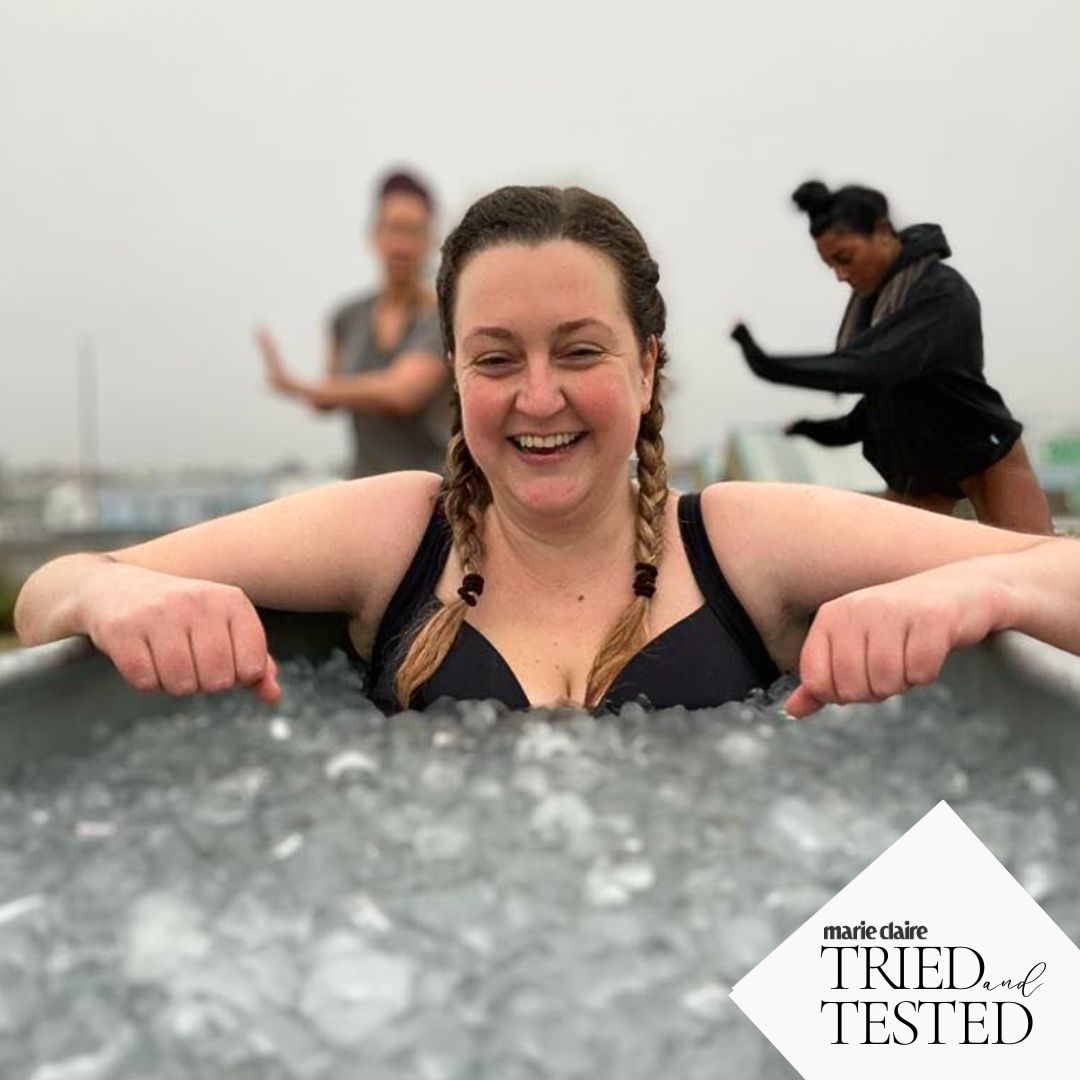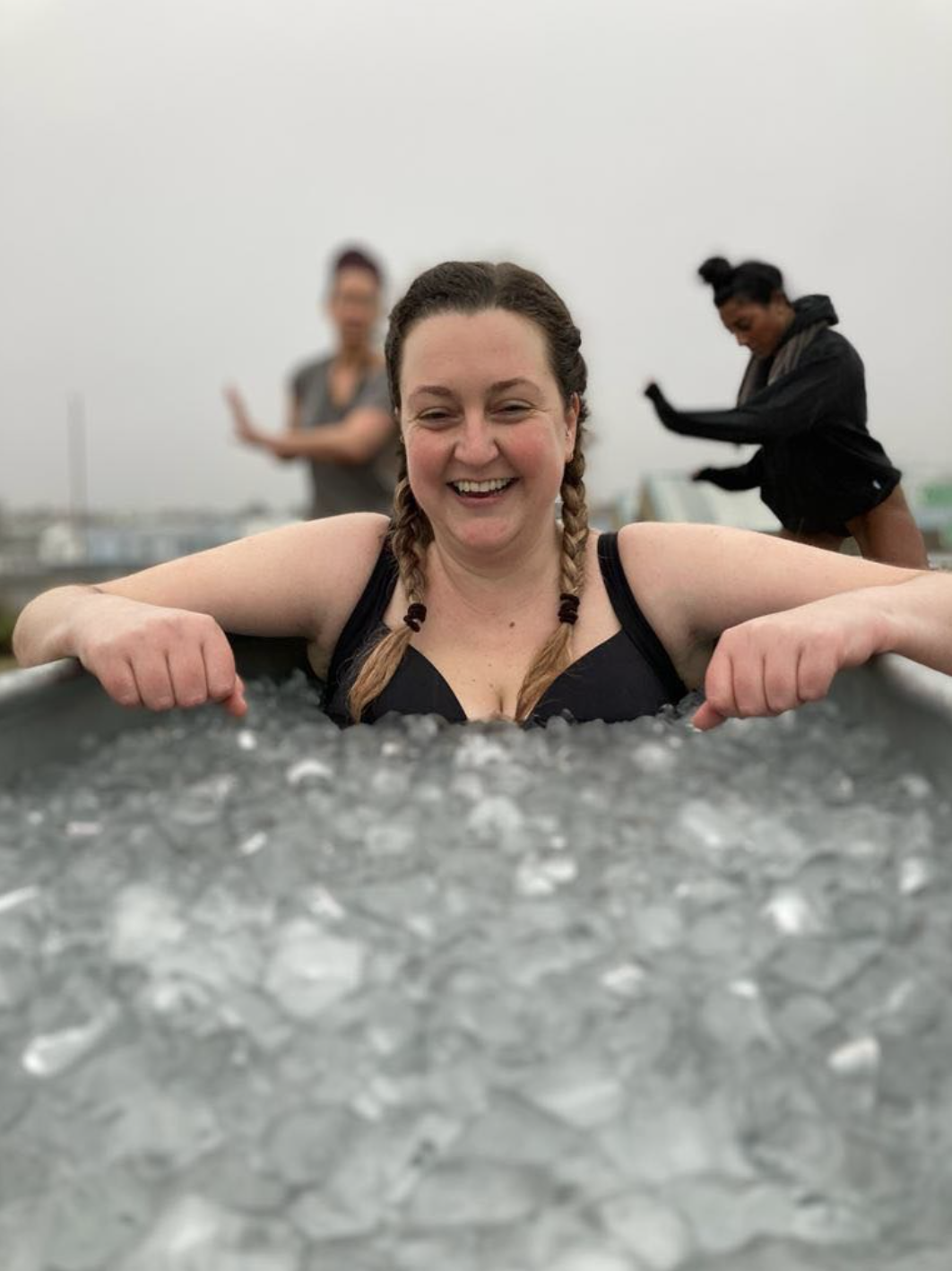
Wellness isn’t just about pricey Pilates classes and exclusive invite-only festivals. In fact, in recent years, more people have turned to cold water therapy, with Dutch extreme athlete Wim Hof growing a cult-like following thanks to claims that it comes with a whole host of health benefits.
Like? Quicker recovery after training, deeper sleep and improved mental well-being from just a few minutes of cold exposure. That all sounds like a pretty appealing payoff for something fairly straightforward, right?
His devout followers promise life-changing results from cold showers and crisp open water swimming, but one of the most popular ways to practise is through the use of ice baths. Celebrities Harry Styles, Miranda Kerr and Lady Gaga are all rumoured to be fans, with athletes like Cristiano Ronaldo, Naomi Osaka and Usain Bolt on board, too. And then there are doctors and experts who have researched the benefits of cold water therapy in depth, claiming that regular exposure could be the key to improving your mood, boosting your immune system and increasing your energy levels.
If just visualising yourself in a tub of freezing water is enough to make you tense up - same. However, in a bid to find out what ice baths are really like and whether or not that raved-about post-bath buzz actually existed, I set off to Brighton to try a cold dunk with The Happiness Coach World.
The holistic retreat was curated by Tony Robbins-accredited life coach Kate Dennison who runs The Happiness Coach World and tailors bespoke retreats across the UK. Whether it’s corporate clients looking for team-building weekends with a difference or friends who fancy a few days of wellness, Kate’s aim is to offer a completely customisable package depending on how you want to feel. Lucky for me, mine included the Wim Hof method. Keep scrolling to find out how I fared - and don't miss our guide to breathwork training, while you're here.
I tried the Wim Hof method for the first time and found the practice pretty life changing
During my two-day retreat, I enjoyed a sweaty high intensity interval workout flipping tyres and praying that my quivering quads didn’t give up on me mid-burpee and plotted goals in a life coaching session. There was even an opportunity to cultivate intense connections with one another through a Kundalini eye contact workshop (trust me, it’s only when you’re staring into someone’s eyes for 60 seconds straight that you realise just how long a minute really is).
That said, it was the Wim Hof-inspired segment that I was looking forward to the most. Lucky for me, it became the most transformative experience of them all.
So, how did it start? I'll paint a picture for you. As I stood in front of a small ice-filled tin bath nestled in the stones, confused strangers wondering why a bunch of half-naked people were circled on the wet and windy beach, I became acutely aware of the fact that however chilly I was feeling in my swimming costume as the rain battered against my bare thighs, I was about to get a whole lot colder.
Before braving the freeze, I was given an instructional talk (indoors, thankfully) about how to safely prepare myself and learnt that there’s more to it than simply dropping yourself into the ice and hoping for the best. I’d read about the benefits of cold water therapy, and "The Iceman" himself had been cropping up on my social media feeds more and more frequently.
His trademarked method comprises three parts:
- Controlled breath work
- Exposure to the cold
- Unflappable focus.
The specific breathing model - whereby you are encouraged to inhale as deeply as you can before exhaling without force - is used to increase the amount of oxygen in your body and stimulate the parasympathetic system. The cold exposure can be anything from a heatless shower to frosty hikes in very few layers, and the mindset required is one of confidence and capability.
When the time came for me to hop in, I followed the instructions: focus your mind, lower yourself slowly and don’t forget to breathe. As the ice reached my shoulders, I very quickly realised that feeling cold wasn’t my biggest concern. Rather, the intense and unexpected difficulty to regulate my breath was. For around twenty seconds, I was really struggling to inhale deeply and exhale slowly. No matter how hard I tried to extend my frantic gulps for air, it felt impossible to pass the millisecond mark - my body just wanted to suck in oxygen, and sharply. In a last-ditch attempt to push through, and with the instructor calmly encouraging me to slow down, I closed my eyes and gave it one more go.
Suddenly, I was able to breathe a little deeper and then exhale a tiny bit slower. On the next breath, I pushed a little more. And before I knew it, I had totally calmed down. As I realised I was actually doing this, I even managed to smile.

When the timer rang out after two minutes, I hoisted myself back onto the pebbles and immediately started the warm-up ritual - knees bent and arms pushing the air as I let out "HA" sounds powered from the depths of my belly. The rush was so powerful that I felt almost invincible.
Now, I say this next part without a hint of hyperbole. I was riding this ice bath high for a good few hours afterwards. Was it partly the pride I felt for mastering the mental hurdle? Maybe. But there is something in the full-body electric charge you feel post-ice dunk that explains why so many people are cold water converts.
Since my first ice bath, I’ve made a conscious effort to ensure that the last twenty seconds of my shower are under cold water and I’ve recommended it to anyone who’s interested in testing it for themselves.
Of course, I was lucky enough to have expert supervision while undertaking my first ice dunk. Do make sure to consult with your doctor before undertaking anything new - cold water may not be beneficial for you if you have heart conditions or underlying health issues.
To fully determine whether or not the practice truly is life-changing, the retreat coaches confirm that I'd have to make sure ice baths - rather than short icy shower blasts - are a regular part of my routine. That said, there’s no denying that even if used sporadically, there’s something incredibly rewarding about being able to master your mind and body in extreme discomfort. That invigorating buzz is worth every second.
Read more about The Happiness Coach World retreats here.
Shop our go-to cold water essentials now:
Built from natural rubber, Finisterre designs will last the long run and avoid harming the planet in the process, too. We're big fans of this red and navy colourway.
Preserve what heat you have with this wool-blend knitted beanie from GANNI.
The brand says this product has been certified climate compensated - that is, the carbon footprint has been calculated and compensated to reduce environmental impact.
Upgrade your post-ice dunk shower with this neroli and petitgrain body soap from Austin Austin. They're one of Health Editor Ally Head's favourite brands for a reason - made without GM ingredients, silicones, parabens, mineral oils, artificial colours or fragrances, their products are also certified organic and vegan.
What does the Wim Hof Method actually do?
According to Medical News Today, the Wim Hof Method is actually a form of meditation whereby you are able to deal with cold temperatures via the power of breathing and your mind.
Breathing in this way can help calm daily stress and regulate your parasympathetic system, key to avoiding stress and anxiety.
Aside form that, you'll experience a massive endorphin rush as your body returns to normal temperature. What's not to love?







